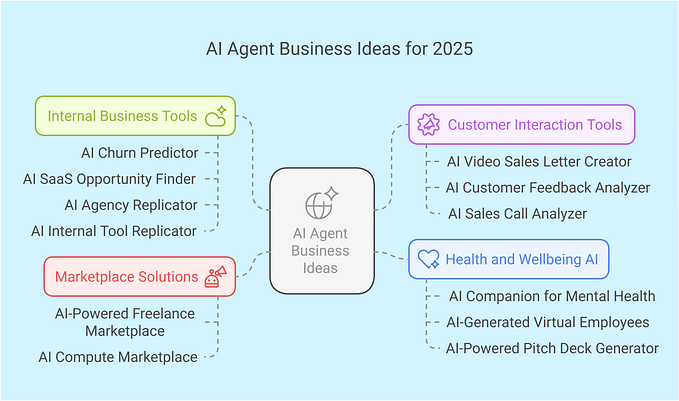Empower your business with an AI-powered chatbot

While accessing some websites, you might have come across a chatbox popup to connect with you. Well, those are chatbots that help in conducting an online conversation.
These chatbots are gaining popularity for their benefits of instant connection with potential customers. Chatbots are conversational applications that have replaced the traditional way of having human support agents with AI and other automation technologies to chat with end-users.
But How is AI driving these chatbots?
AI has become a driving force and the trending technology for developing chatbots. It has taken the online business to another level without relying on human agents and automating everything from connecting to influencing customers.
Below is an interactive example of chatbots.

Many businesses are leveraging chatbots to improve and automate their user experience and other transactional features. Not only this but including chatbots has helped them save tons of cost by eliminating personnel support.
Do you know what Chatbots are?
These are application software facilitating the exchange of “question-response” information between humans & machines. They worked on NLP (Natural language processing) and are molded in a format of messaging apps, mobile apps, eCommerce websites, telephone & maybe more in the future.
Chatbots have evolved over the years and are getting future-ready by levering trending technologies like AI, ML, and others.

These chatbots are shaping the future and making it more innovative. Thus companies are emphasizing developing AI-based chatbots to deliver the best services.
How do chatbots work?
Chatbots analyze and determine the intent of the user’s request and extract desired information based on their queries. After proper analysis, the response will be delivered to the user.

Chatbots work on three classification models.
- Pattern matching using AIML (artificial intelligence markup language). Bots react to the related patterns.
- NLU (natural language understanding). It will convert the text into structured data to be recognized by machines.
- NLP (natural language processing). It converts the text into structured data to choose relevant information. It includes entity recognition, dependency parsing, and others.
Reasons to include chatbots over Traditional ways.
Well, there are several benefits to switching to chatbots over traditional methods.

- Improved and more personalized customer service for better support.
- Reduces the cost of investment by eliminating customer care services.
- It improves user experience as they get instant solutions to their queries.
- It helps streamline the purchase process for new and existing customers.
- It helps in improving the team’s productivity as they automate various tasks.
- You can integrate more features into your chatbots to be more functional and engaging.
Do you know there are different types of chatbot technologies?
New technologies are making chatbots more dynamic and evolving the chatbot capabilities. Chatbots are categorized into three simple categories that are differentiated based on their name and technical complexities.
- Simple Chatbots (rule-based)
Have limited capabilities and are task-specific. Bot poses questions using predetermined options and provides options for users to choose from until they get answers to their queries. Suitable for straightforward dialogues that are easy to build and train. Interactions are highly structured. Have limited capabilities and are task-specific.
Example: Ordering Pizza using a chatbot with predetermined options.
- Intelligent Chatbots (AI-based)
Leveraging the power of ML and NLP, these bots understand the context and intent of the user’s query. Based on chatbot scripts, they provide answers even to complex queries. The more you use these bots, they learn and adapt to provide a better user experience.
It applies predictive intelligence and sentiment analysis to monitor customer emotions closely and learn from user behavior to provide more personalized interactions.
Example- Virtual Assistants.
Rule-based or AI-powered? What is your Business choice?
Well, the decision entirely depends on your project’s requirements. What type of audience do you want to cater to, what queries would you be working on, and what other factors?

If your business needs a controlled audience, it can leverage guided information. In that case, rule-based bots are a perfect solution. But, it does not allow you to handle complex queries.
That is why businesses are moving towards AI-based bots for better conversation. We have explained the difference using the below use cases.
- Sentiment analysis-
The capability of any chatbot is determined by how they scroll the large datasets to identify the customer’s intent. With AI-based bots, it is easier to connect with customers’ sentiments, understand what they are up to, and provide a relevant solution. This is impossible if you go by the rule books, where you have limited options.
- Identify behavioral patterns-
AI-based assistants or bots can identify inaccurate behavioral patterns with human effort. They analyze, learn, and train themselves based on changing patterns. Thus able to provide a better user experience.
- Learn through user preferences-
To provide more personalized solutions to the customers/users, AI bots work well as they can easily extract the data from the integrated databases and chat history to improve the customer experience. They keep on learning and adapting from every customer interaction and store gathered information for future reference.
Rule-based bots are helpful in some scenarios, but they outrun and might not provide the expected results in some cases. Thus AI-based bots are coming to the rescue of every modern-age and evolving business.
How to build one?
Chatbots have automated main business functions, such as sales, support, and marketing. You can integrate chatbots with any platform. Thus you can see many top brands are using chatbot development services, for example, Android, Facebook, Viber, etc.
To develop chatbots for your business, you need to follow a standard procedure and help your business get more customer responses-

- Define the objectives, why you want to create a chatbot, and how it can help your business to get customers. What will your chatbot do, behave, engage customers, and automate various tasks?
- Find the right channel where you will find potential customers to start the interaction. For example- website, mobile app, Facebook, Telegram, Instagram, or other messaging platforms.
- Train your chatbot in a manner that they are capable of answering customers with the relevant information they are looking for. AI chatbots are the way to go.
- Define the personality of your chatbots. You can provide a name and voice and automate some responses.
- Curate a balanced approach, combining chatbot features with human support if chatbots cannot solve your query.
- Test, launch, and iterate the process until you get the expected results and improved customer engagement.
Choose your Chatbot platform
Chatbot platforms have made the development of chatbots easier. Some commonly used development frameworks are as below-

Build from scratch
You need to choose the right tech stack that will ease the development of your chatbot. Well, other factors need to be considered. Sometimes, you must work from scratch if you have unique business requirements.

If you struggle to find the right technology stack to build from scratch.
Conclusion:
Every online business understands the actual benefits of chatbots. With the introduction of technologies like AI, chatbots’ future is bright, and it can uncover many opportunities that help businesses to improve their user experience to another level.
If you have yet to consider integrating or developing one, it is time to move your step forward to success with AI-powered chatbots.









